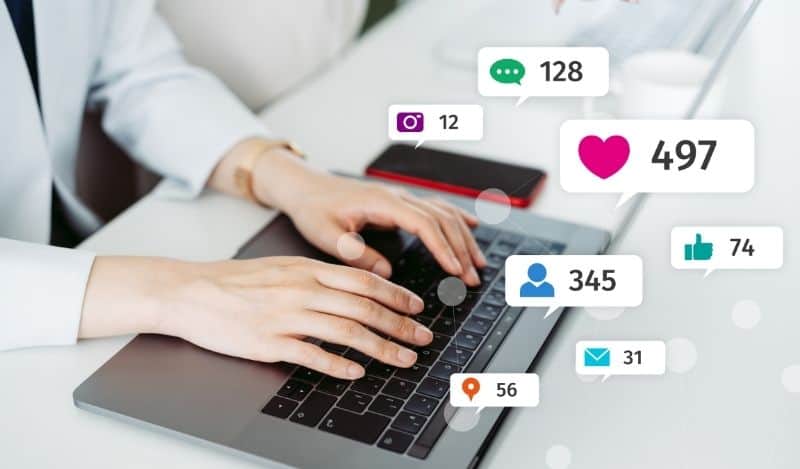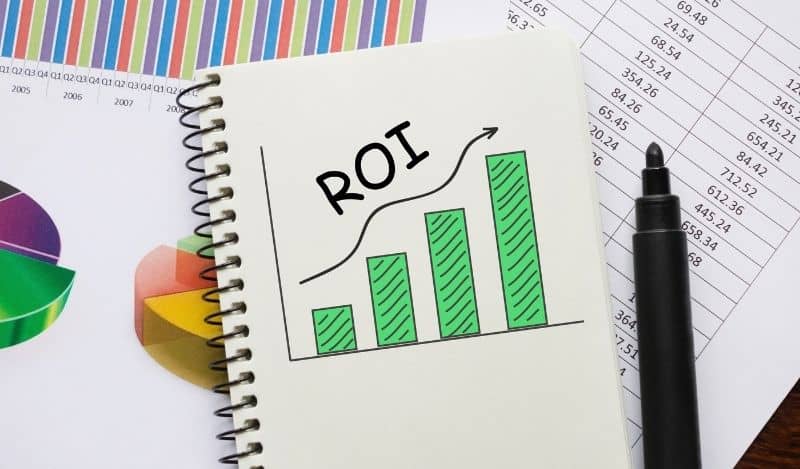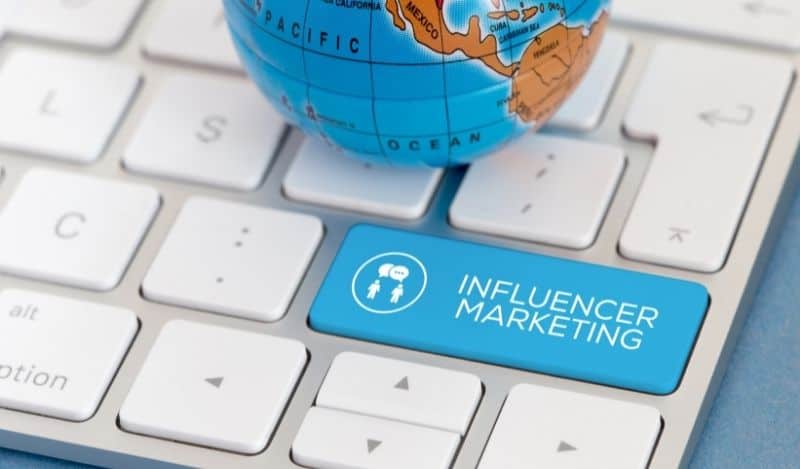Influencer marketing. It’s all the hype these days. In fact, nine in every ten marketers have an influencer marketing strategy.
If you want to hop onto the bandwagon, there are a few things you need to comprehend to make the most out of your efforts.
Apart from understanding the basics – such as what influencer marketing is and who’s the ideal influencer – you also need to understand how to measure your influencer marketing campaigns’ return on investment (ROI).
Read through this article to the very end, and you’ll learn exactly what to do to run a successful influencer marketing campaign.
Sounds like a deal? Good!
But before we delve deeper, let’s get a few things out of the way first.
Why is Influencer Marketing Important?
Influencers, at their very core, are your content producers. They create native ads that tend to resonate better with your target audience. The ripple effect is that this enhances your advertising performance and boosts overall conversion.
Since consumers perceive influencer content as authentic, they engage with it more than they would with generic content on your website created by your team.
How Can an Influencer Marketing Campaign Help Your Business Generate Revenue?
Influencer marketing is one of the quickest ways to boost your brand’s awareness.
According to Google Trends, searches for the term “influencer marketing” has grown by a whopping 5000% every month. In fact, influencer marketing is growing faster than digital ads.
But how exactly can influencer marketing help boost your income levels? Here’s how:
You Can Build Trust Quickly
A study by Edelman found that 81% of customers need to trust a brand before they can buy from them. Influencers have already nurtured relationships, credibility, and trust with their followers.
By sharing your content, an influencer can draw attention to your brand, thereby putting your business in front of your target audience.
It Improves Your Brand Awareness
As stated, influencer marketing can significantly stretch your brand’s reach and positioning online. With increased awareness, potential customers will start to know about your business, what you do, and the solutions you offer.
It Enriches Your Content Strategy
By sharing your content via an influencer, you can fill the gaps in your content schedule. This strategy works pretty well when you want to publish quality content on your social media pages to attract buyers. It can also come in handy when you’ve run out of content ideas.
You Can Effectively Reach Your Target Customers
By partnering with the right influencer, you can reach your target audience without burning through your wallet. It also allows you to test and find potential customers. Think of it as a strategy to help you find qualified leads without blowing your budget.
Influencer Marketing Delivers a Strong ROI
This is a big one.
Businesses that leverage influencer marketing for publicity generate $18 for every $1 they invest. These returns land in the high end of the spectrum, with an average of $5.20 across the board.
Most businesses record solid results using influencer marketing, with just the bottom 18% failing to generate revenue.
Why Should You Know the Goal of Your Influencer Marketing Campaign?
Indeed, influencer marketing can help take your business to the next level. However, it is essential that you establish the goal of your campaign from the get-go.

It is crucial to know where you are before you start to roll out your marketing campaign. Also, you should conduct an interim measurement to see if you’re on the right track.
With a concrete plan, you can efficiently optimize and measure results at the end of the campaign duration.
The following includes the benefits for setting what you want to achieve with an Influencer Marketing campaign:
- Enables you to focus on relevant matters that can have an impact
- Plan and manage your resources effectively
- Transparency and clarity
- Remain steadfast with your plans,
- Keep track and focus only on performing influencers generating results
How to Assess the Success of Your Influencer Marketing Campaign
So, you’ve partnered with the relevant influencer. They have posted incredible pieces of content for your business. How can you then measure and assess if your campaign is succeeding?
You can measure the success of your influencer marketing campaign by analyzing the following Key Performance Indicators (KPIs).
1. Conversions
The easiest way to track conversions generated by influencer marketing campaigns is to keep tabs on sales before, during, and after the campaign. You’ll then compare these numbers to see if there were any sales changes when the campaign was running.
For a more detailed approach, you can set up promo codes, affiliate links, landing pages, and link tracking for the campaign. That way, you can know the traffic sources of buyers who converted during the campaign.
You’ll want to track other conversion rates, including the number of followers your brand obtained, Facebook likes generated, and people who signed up for your mail listing.
2. Referral Traffic
By tracking the referral traffic, you can have an idea of your campaign’s reach. Of course, the higher the referral traffic, the more successful your campaign is.
Some of the tools you can use to monitor campaign-driven referral traffic include UTM parameters and promo codes. You can also use the metrics generated by Google Analytics and compare them with pre-campaign metrics to measure your campaign success.
Keep an eye on these following metrics:
- Referral sources
- New visitors
- Time on site
- Total page views
3. Reach and Awareness
The primary reason you’re teaming up with an influencer is to leverage the person’s reach. This reach helps increase your brand’s visibility.
When measuring the success of this KPI, you’ll want to track the number of people who became aware of your brand and how the campaign solidified your business with pre-existing customers.
You can measure awareness by tracking impression data generated by your content before the campaign versus after the campaign. You can get this information through your social media profile analytics, the influencer’s website, or Google Analytics account.
4. Audience Growth
Picture this; a person scrolling through their Facebook account clicks on a blog post uploaded by a food influencer they follow. They read through the blog and click on a website owned by a new food outlet in the city.
According to reach and traffic KPIs, the person is now aware of the outlet. However, upon checking the menu, the person realizes that the outlet only sells food for people with dietary restrictions. The individual leaves the website and forgets about the outlet.
While the person is aware of the food outlet, they don’t follow its social media accounts. According to the audience growth KPI, the campaign isn’t successful.
When measuring audience growth, you’ll need to use social media site analytics to track your followers, see how many new people follow your brand during the influencer marketing campaign, and compare the growth to pre-campaign figures.
You can also monitor your email list to compare many potential customers who sign up during the campaign to pre-campaign numbers.
5. Engagement
Engagement provides a more detailed view of how people receive your campaign. This important KPI also enables you to know how strong your relationship with your audience is, how relevant your brand is, and how loyal the new customers will be.
You can measure the level of engagement created by an influencer’s content by looking at the following actions:
- Likes
- Comments
- Reactions
- Votes
- Clicks
- Video views
- Pins
- Shares
Why Do You Need to Measure Your ROI on Influencer Campaigns?
Running an influencer campaign means spending money. And, when you’re pumping money, you want to know if you’re getting the returns you hoped for.

With that in mind, here’s why it is necessary to measure the ROI of your influencer marketing campaign.
You Can Know Whether to Continue or Discontinue
Calculating your influencer marketing ROI allows you to understand if the campaign is working or not. If the returns are positive, it makes perfect sense to continue.
However, if the ROI results are unfavorable, it means you’re losing money. You’ll want to re-look at your strategies to help you decide if it’s time to pack it up.
You Can Measure the Authenticity of your Campaign
The influencer you’re working with can claim your posts are meeting the five KPIs discussed above.
While this can be true, it is good to be wary of bots that can give false results. Besides, the influencer can use comments or like pods to boost engagement.
If your content’s engagement isn’t translating into buying customers, then there’s every likelihood that your campaign isn’t authentic and will lead to a negative ROI.
You Can Compare and Partner with the Right Influencer
Some influencers have a huge following. However, working with them doesn’t necessarily translate to better conversions.
Measuring the ROI of your campaign allows you to know if you’re working with the right influencer. It also enables you to try out various influencers and decide which one offers the best ROI for your business.
You Can Know Which Platform Works Best for Your Business
When you measure your influencer campaign’s ROI, you can know which social media platform brings in the best results. That way, you can decide which channel to allocate more resources and where to cut your budget.
How to Calculate ROI for Social Media Influencer Campaign
Calculating ROI for your influencer campaign is arguably the most challenging part of the entire campaign.
The influencer marketing ROI formula looks something like this:

Let’s say you invest $5,000 in an influencer marketing campaign and generate $10,000 in the end. Using the formula above, your ROI will come out as 200%. Let’s walk through it.
A profit return of $10,000 divided by an investment of $5,000 equals 2. Then, 2 x 100 equals 200. That is why our return is 200%.
Tips for Measuring the ROI from your Influencer Marketing Campaign
You know how to calculate your influencer campaign ROI. But, how then is the ROI measured? Follow these tips to help you measure the ROI from your influencer marketing campaign:
- Track visits, registrations, and referrals
- Measure sales
- Assess your brand lift
- Review the above metric after 90 days
- Track affiliate links
- Monitor engagement health
- Leverage personalized surveys
When Should You Stop Running an Influencer Campaign?
It takes a while to get results with your influencer campaign. There isn’t a clear cut time period to follow. However, the following factors are ones that will indicate when it may be time to stop running your influencer campaign:
- The influencer you’re working with
- Your brand
- Your product
- The budget
- The process
- Execution
In most cases, it can take up to 3 months to start seeing the results. Put differently, in three months, you’ll have collected enough data to conclude the performance of your influencer campaign.

So, when should you stop running your campaign?
You can bring your campaign to a halt after you’ve achieved the goals you set at the beginning.
Also, you can stop the campaign if you’re experiencing a negative ROI. During this time, you’ll re-evaluate your process to see what is going wrong and what you can do to turn your campaign around.
Conclusion
Influencer marketing is just taking off, and you don’t want to be left out.
With the increase of word-of-mouth marketing and social proof, it is an excellent way to connect with prospects, enhance your brand awareness, and boost conversions.
With the impressive returns a successful campaign can net your business, it is time to include influencer marketing into your growth strategy.
Even so, the journey to success starts with partnering with the right people who know what they are doing.
Signalytics influencer marketing service can help your brand stand out in your industry.

